Posted by Wall Panels World on 2nd Jan 2025
Standard Ceiling Height UK | New 2025 Regulations
Ceiling heights can vary drastically across residential British properties and homes.
Victorian, Georgian and Edwardian homes often have different ceiling heights, reflecting the function of the era. New Builds also have new ceiling height regulations.
Read on to find out the standard UK ceiling height and what this means for your property!
Standard Ceiling Height UK
The average ceiling height for contemporary UK homes is approximately 2.4 metres (7 feet 10 inches).
This figure is not strictly based on governmental standards, which depend on your local planning authorities.
The Department for Levelling Up, Housing and Communities (DLUHC) sets national space standards for new homes, this includes a minimum ceiling height of 2.3 metres over at least 75% of the floor area.
The Mayor of London has set a higher minimum ceiling height of 2.5 metres for all new housing in London. This is part of the London Plan, which is a strategic planning document that sets out the Mayor's vision for the future of London.
Table Of Standard UK Ceiling Heights
| Building type | Minimum ceiling height (metres) | Regulating authority | Link |
|---|---|---|---|
| New homes (outside of London) | 2.3m | Department for Levelling Up, Housing and Communities (DLUHC) | Building regulations |
| New homes in London | 2.5m | Mayor of London | London Plan space standards |
| Extensions and alterations to existing homes | May vary depending on local planning authority requirements | Local planning authorities | Find your local planning authority |
| Habitable rooms in all buildings | 2.3m | Building Regulations 2010 | Building regulations 2010 |
| Stairs | 2.0m (reducing to 1.8m in some situations) | Building Regulations 2010 | Stairs and handrails |
The following organizations provide guidance on ceiling heights for new buildings and extensions:
- The Royal Institute of British Architects (RIBA) is the UK's professional body for architects. The RIBA publishes a number of guidance documents on building design, including one on space standards. The RIBA's guidance recommends a minimum ceiling height of 2.4 metres for habitable rooms.
- The National House-Building Council (NHBC) is a warranty provider for new homes in the UK. The NHBC publishes a number of technical standards for new homes, including one on space standards. The NHBC's standards require a minimum ceiling height of 2.3 metres for habitable rooms.
Is 2.4m The Ideal Ceiling Height For British Homes?
- The National House Building Council's (NHBC) research paper "Standards for the 21st Century" analyzed data from over 100,000 builds. It found 2.4m was the most common ceiling height used.
- The English Housing Survey 2020 report by the Department for Levelling Up, Housing and Communities states 2.4m is the "minimum height standard for ceilings" for new homes.
- According to Approved Document M published by RIBA, minimum height standards for ceilings are 1500mm (1.5m) for appliances and 2.1m for rooms. But it notes 2.4m is the commonly accepted standard.
- A Cambridge University study on thermal efficiency tested various ceiling heights. It concluded "2.4m represents an optimal balance" for most UK homes based on heating needs.
- Ergonomics professors O'Neill and Evans conducted reach studies and found 2.4m ceiling height allowed for the most natural movement and easiest reach.
Regulations and Guidelines for New Builds
Here's a closer look at the regulations of ceiling heights in new builds and their implications
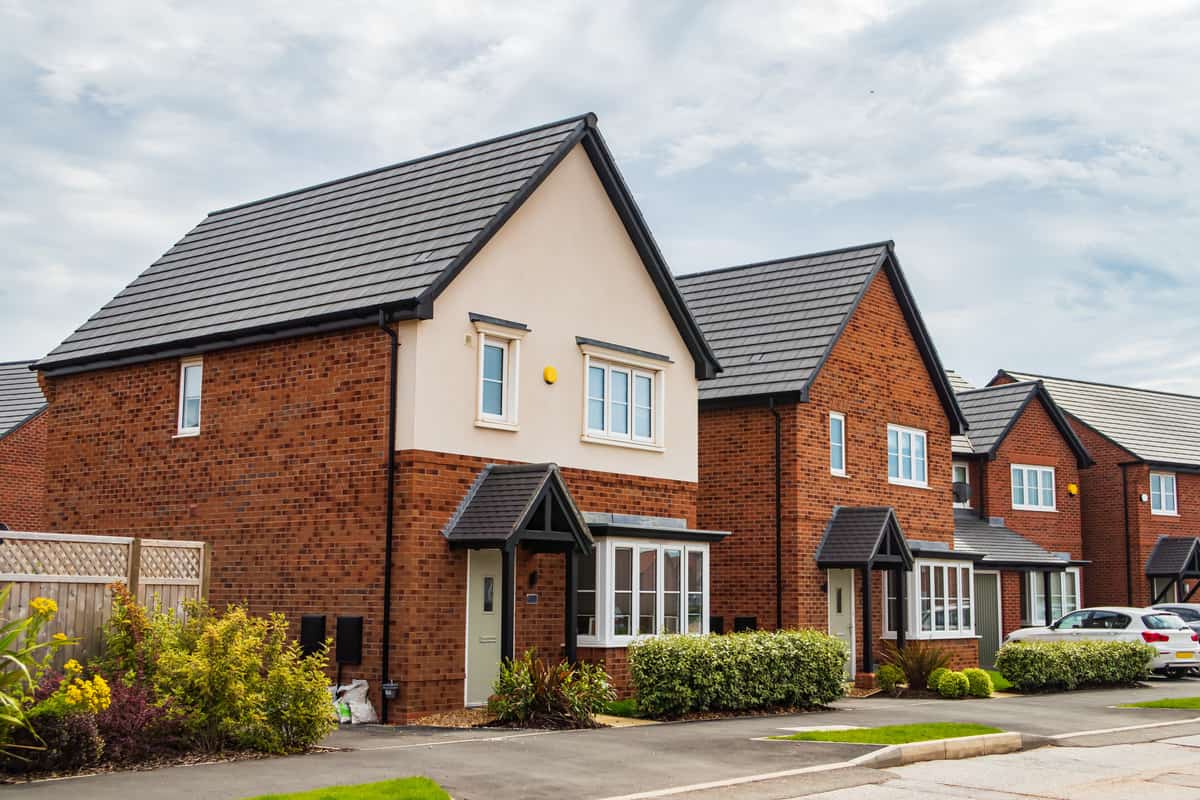
Building Regulations Act: Approved Document Part M
This critical document, often referred to as Part M, pertains to the accessibility and use of buildings. While it doesn't stipulate an exact minimum ceiling height, it emphasises creating spaces that are not oppressive or that could hinder accessibility. The drive behind this is to ensure spaces are comfortable and easily navigable for all, including those with disabilities.
Efficiency in Construction
A 2.4m ceiling height has been indirectly favoured due to its alignment with standard construction materials. For example, plasterboards, timber lengths, and other foundational materials often come in dimensions suited to this height. This ensures a smoother construction process, reducing waste and ensuring cost-effectiveness.
Energy Conservation Requirements
The Building Regulations also encompass Approved Document L, which is concerned with the conservation of fuel and power. A ceiling height of 2.4m is optimal for efficient heating and cooling, ensuring a balance between room volume and energy consumption. This is particularly crucial in the UK, given the variable climate and the push towards more energy-efficient homes.
Room for Adjustments
It's essential to understand that while 2.4m might be the standard, there are allowances for deviations, especially if you're aiming for a specific architectural style or if the building serves a unique purpose. However, any significant deviation should be done after thorough consultation, ensuring it meets all necessary regulations and provides a comfortable living environment.
Working with Sloped Ceilings
Sloped or angled ceilings can pose challenges when converting a loft or attic space. Here are some tips for optimising usability and comfort:
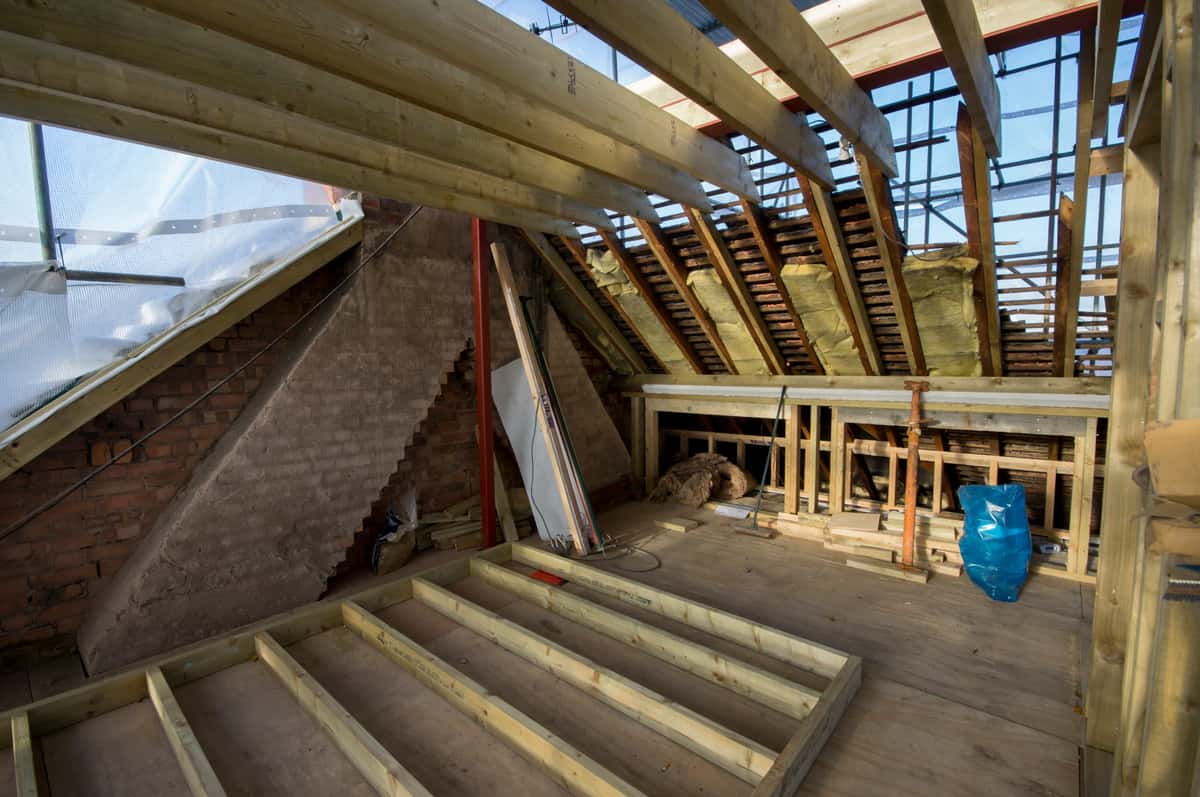
Furniture Placement
- Position low furniture like beds, sofas, and cabinets along the walls in the tallest part of the room.
- Use dressers, nightstands, desks and dining tables in areas with more headroom.
- Choose furniture with short or adjustable legs to accommodate the slope.
- Angle furniture like desks diagonally to fit in awkward spaces.
Lighting Options
- Add recessed lights in the ceiling to maximise headroom.
- Use pendant lights over areas where ceiling height allows.
- Install sconce wall lights where the ceiling is too low for pendants.
- Add accent lighting on architectural beams or knee walls.
Roof Dormers
- Dormer windows can add light, views and headroom.
- Shed dormers are less expensive than gable dormers.
- Planning permission may be required for exterior changes.
- Interior dormers maintain roof profile but reduce outside space.
Ceiling Treatments
- Paint sloped ceilings white to maximise reflected light.
- Disguise angles with coffered or panelled ceiling designs.
- Add wood beams or architectural elements for character.
- Cover knee walls and ceilings with matching finished for a unified look.
With some creative planning, sloped attic ceilings can feel just as inviting and useful as traditional spaces.
New 2025 Regulations for Residential Properties
In 2025, whilst there are no new regulations on ceiling height, the Future Homes Standard will introduce significant changes to UK residential construction. These include:
- Energy Efficiency: Stricter standards under Part L of the Building Regulations will improve insulation and reduce energy consumption.
- Ventilation: Updated requirements under Part F will ensure better indoor air quality in new homes.
- Low-Carbon Heating: All new residential properties will feature low-carbon heating systems, such as heat pumps, reducing reliance on fossil fuels.
These updates align with the UK's goals for safer, greener, and more energy-efficient homes. Builders must also adhere to enhanced safety measures, particularly for high-risk residential buildings.
Learn more about these upcoming regulations in the official Future Homes Standard consultation.
Ceiling Height by Era
Ceiling heights often vary based on the architectural style and era of the property. Here is an overview of typical ceiling heights found in homes from different periods:
Victorian Homes (1837-1901)
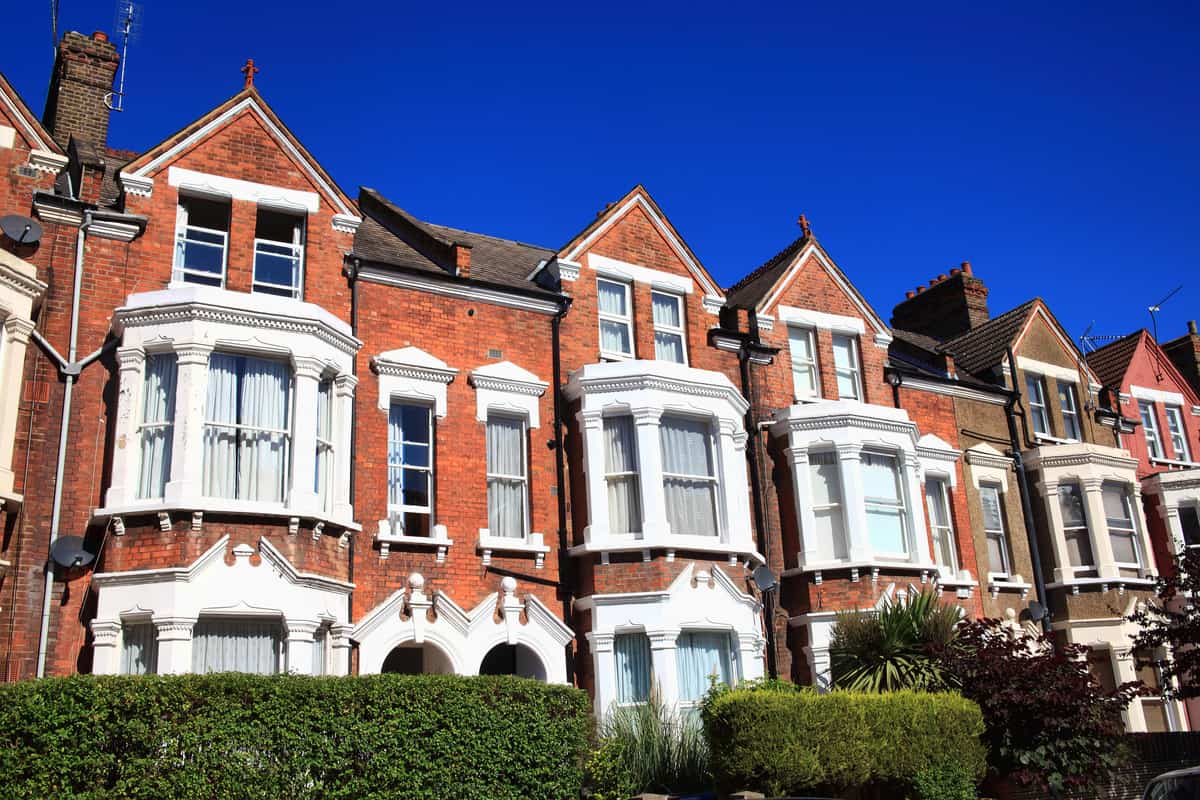
- Ceiling heights of 2.4 to 2.7 metres are common.
- Victorian rooms were spacious with higher windows, requiring taller ceilings.
- Ornate decor like rose ceiling medallions further drove ceilings upward.
- Public rooms and master bedrooms had the highest ceilings, around 2.7 metres.
- Service rooms like hallways had lower 2.4 metre ceilings.
Edwardian and Georgian Homes (1714-1837)
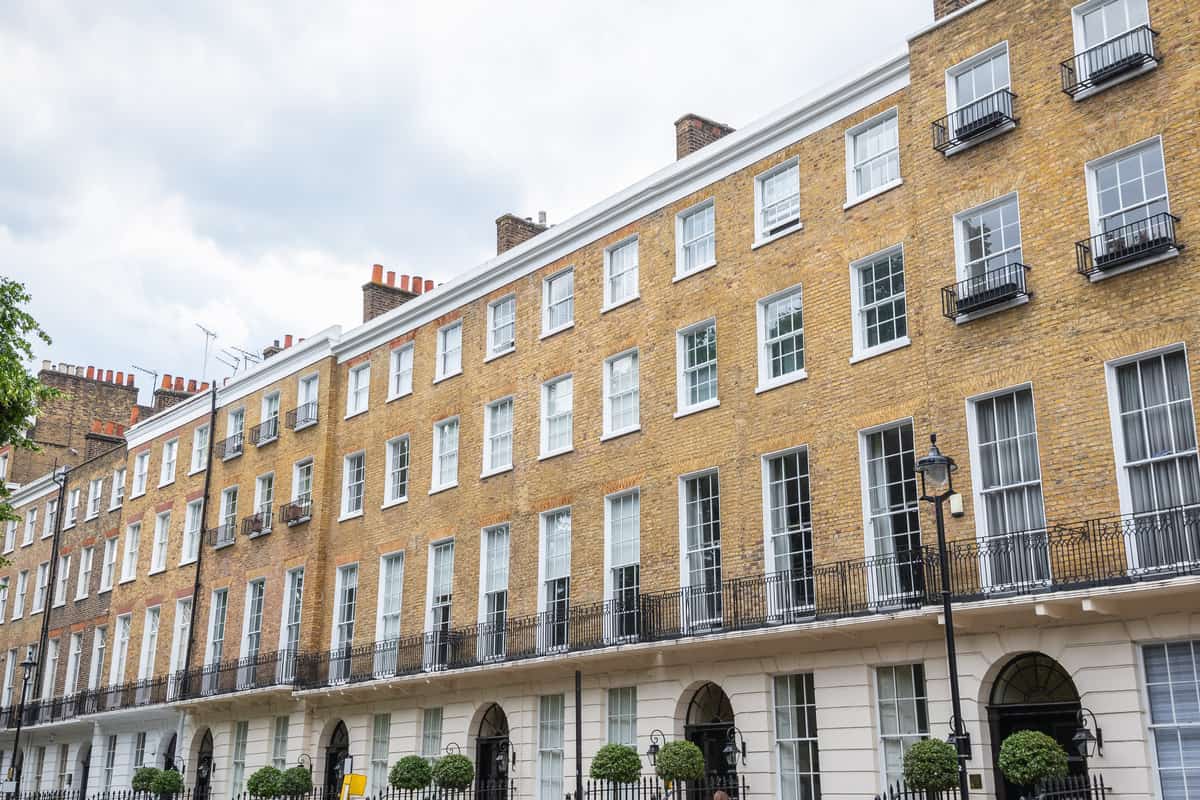
- Ceiling heights range from 2.4 metres up to 2.7 metres or higher.
- Elaborate cornices, centrepieces and decorative moulding added height.
- Drawing rooms, ballrooms and main halls often had dramatic ceilings exceeding 3 metres.
- Second floors typically had lower ceilings around 2.4 to 2.5 metres.
Post-War Homes and Bungalows (1918-1945)
- Ceiling heights reduced to around 2.1 to 2.3 metres as costs were cut.
- Houses built in the 1930s often had 2.4 metre ceilings returning.
- Bungalows had variation but lower headroom around 2 to 2.2 metres.
Modern Homes (Post 1945)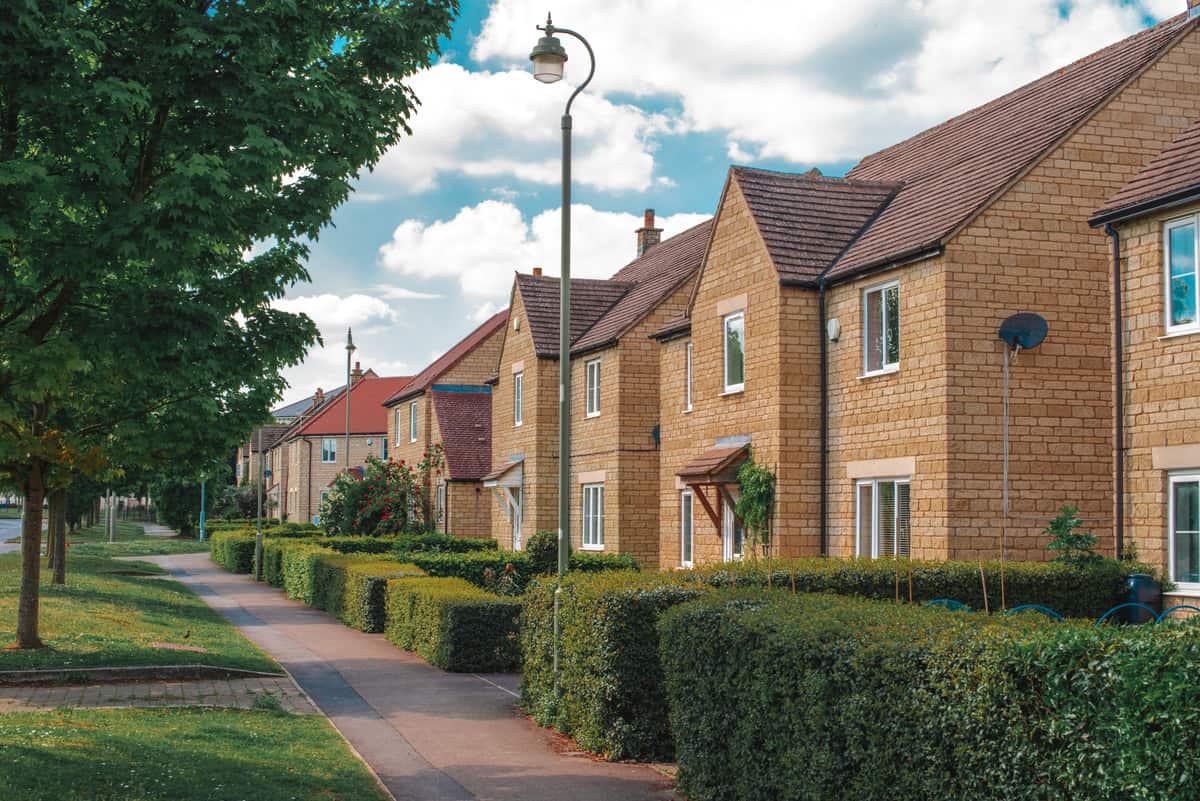
- Modern builds adhere to 2.3 metre minimum ceiling height standards.
- New-build flats and apartments may have 2.1 to 2.3 metre ceiling heights.
- Contemporary materials allow more flexibility in ceiling design.
FAQs
What is the standard ceiling height in most UK homes?
The typical ceiling height in modern UK houses is around 2.4 metres or about 7 feet 10 inches. This measurement of approximately 2.4 m from floor to ceiling is commonly recommended by building regulations for comfort, furniture space, and heating efficiency.
What are the minimum ceiling height regulations in the UK?
For new housing construction, building standards specify minimum ceiling heights of 2.3 m across most of the UK. London has a higher minimum of 2.5 m. For renovations of existing buildings, minimums may vary. The only fixed legal minimum is 2 m of head clearance on staircases.
What is the minimum ceiling height needed for a loft conversion?
While there is no legal minimum height, around 2.1 m is the practical minimum ceiling height for a functional loft conversion, allowing room for doors and furnishings. Any lower could be too restrictive for living space.
How can I convert an attic with a very low ceiling?
For attic spaces with extremely low sloped ceilings, the options are either raising the roof (with planning consent) or lowering ceiling heights in rooms below to gain space. Both options add significant cost versus standard loft conversions.
What is the ideal ceiling height for a loft conversion?
A ceiling height of 2.3 to 2.4 m from floor to ceiling is recommended for a comfortable, functional loft conversion. The absolute minimum low end is 2.1 m for basic use. Ceiling height on staircases must be at least 2 m to meet building codes.
Can I increase roof height to allow more space for an attic conversion?
Increasing existing roof height requires planning permission which is rarely granted, as most regulations prohibit altering the roofline profile for a loft conversion. It's best to work within existing roof constraints.
What are the ceiling height requirements for living spaces?
There is no legal minimum for living spaces, but UK building standards recommend 2.3 m minimum ceiling height for new housing construction, 2.5 m in London. Existing buildings may allow lower heights in certain rooms.
What is the minimum ceiling height for a bathroom?
Bathrooms and other non-living spaces can typically have lower ceilings than habitable rooms. A minimum of around 2.3 m is usually adequate ceiling height for a standard bathroom.

